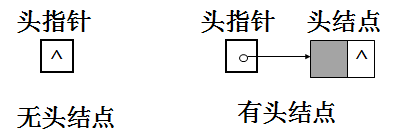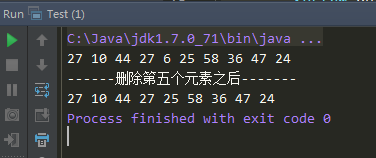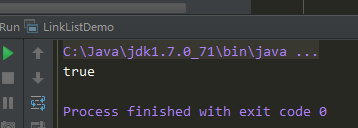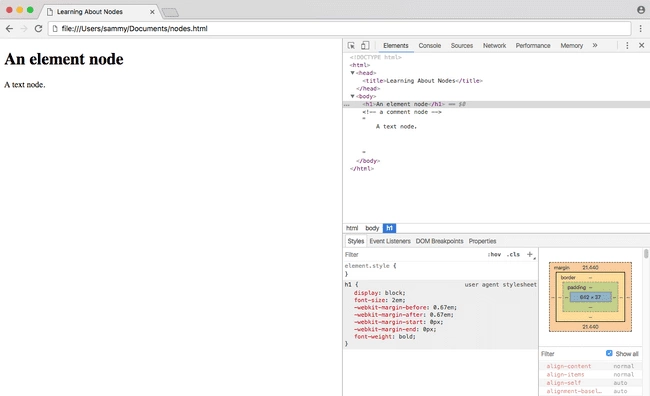数据结构Java实现----单向链表的插入和删除
一、链表结构: (物理存储结构上不连续,逻辑上连续;大小不固定)
概念:
链式存储结构是基于指针实现的。我们把一个数据元素和一个指针称为结点。
数据域:存数数据元素信息的域。
指针域:存储直接后继位置的域。
链式存储结构是用指针把相互直接关联的结点(即直接前驱结点或直接后继结点)链接起来。链式存储结构的线性表称为链表。
链表类型:
根据链表的构造方式的不同可以分为:
- 单向链表
- 单向循环链表
- 双向循环链表
二、单链表:
概念:
链表的**每个结点中只包含一个指针域**,叫做**单链表**(即构成链表的每个结点只有一个指向直接后继结点的指针)
单链表中每个结点的结构:

1、头指针和头结点:
单链表有带头结点结构和不带头结点结构两种。
“链表中第一个结点的存储位置叫做头指针”,如果链表有头结点,那么头指针就是指向头结点的指针。
头指针所指的不存放数据元素的第一个结点称作头结点(头结点指向首元结点)。头结点的数据域一般不放数据(当然有些情况下也可存放链表的长度、用做监视哨等)
存放第一个数据元素的结点称作第一个数据元素结点,或称首元结点。
如下图所示:

不带头结点的单链表如下:

带头结点的单链表如下图:

2、不带头结点的单链表的插入操作:

上图中,是不带头结点的单链表的插入操作。如果我们在非第一个结点前进行插入操作,只需要a(i-1)的指针域指向s,然后将s的指针域指向a(i)就行了;如果我们在第一个结点前进行插入操作,头指针head就要等于新插入结点s,这和在非第一个数据元素结点前插入结点时的情况不同。另外,还有一些不同情况需要考虑。
因此,算法对这两种情况就要分别设计实现方法。
3、带头结点的单链表的插入操作:(操作统一,推荐)

上图中,如果采用带头结点的单链表结构,算法实现时,p指向头结点,改变的是p指针的next指针的值(改变头结点的指针域),而头指针head的值不变。
因此,算法实现方法比较简单,其操作与对其它结点的操作统一。
问题1:头结点的好处:
头结点即在链表的首元结点之前附设的一个结点,该结点的数据域中不存储线性表的数据元素,其作用是为了对链表进行操作时,可以对空表、非空表的情况以及对首元结点进行统一处理,编程更方便。
问题2:如何表示空表:
无头结点时,当头指针的值为空时表示空表;
有头结点时,当头结点的指针域为空时表示空表。
如下图所示:

问题3:头结点的数据域内装的是什么?
头结点的数据域可以为空,也可存放线性表长度等附加信息,但此结点不能计入链表长度值。
三、单项链表的代码实现:
1、**结点类:**
单链表是由一个一个结点组成的,因此,要设计单链表类,必须先设计结点类。结点类的成员变量有两个:一个是数据元素,另一个是表示下一个结点的对象引用(即指针)。
步骤如下:
(1)头结点的构造(设置指针域即可)
(2)非头结点的构造
(3)获得当前结点的指针域
(4)获得当前结点数据域的值
(5)设置当前结点的指针域
(6)设置当前结点数据域的值
注:类似于get和set方法,成员变量是数据域和指针域。
代码实现:
(1)List.java:(链表本身也是线性表,只不过物理存储上不连续)
//线性表接口public interface List {//获得线性表长度public int size();//判断线性表是否为空public boolean isEmpty();//插入元素public void insert(int index, Object obj) throws Exception;//删除元素public void delete(int index) throws Exception;//获取指定位置的元素public Object get(int index) throws Exception;}
(2)Node.java:结点类
//结点类public class Node {Object element; //数据域Node next; //指针域//头结点的构造方法public Node(Node nextval) {this.next = nextval;}//非头结点的构造方法public Node(Object obj, Node nextval) {this.element = obj;this.next = nextval;}//获得当前结点的指针域public Node getNext() {return this.next;}//获得当前结点数据域的值public Object getElement() {return this.element;}//设置当前结点的指针域public void setNext(Node nextval) {this.next = nextval;}//设置当前结点数据域的值public void setElement(Object obj) {this.element = obj;}public String toString() {return this.element.toString();}}
2、单链表类:
单链表类的成员变量至少要有两个:一个是头指针,另一个是单链表中的数据元素个数。但是,如果再增加一个表示单链表当前结点位置的成员变量,则有些成员函数的设计将更加方便。
代码实现:
(3)LinkList.java:单向链表类(核心代码)
1 //单向链表类2 public class LinkList implements List {34 Node head; //头指针5 Node current;//当前结点对象6 int size;//结点个数78 //初始化一个空链表9 public LinkList()10 {11 //初始化头结点,让头指针指向头结点。并且让当前结点对象等于头结点。12 this.head = current = new Node(null);13 this.size =0;//单向链表,初始长度为零。14 }1516 //定位函数,实现当前操作对象的前一个结点,也就是让当前结点对象定位到要操作结点的前一个结点。17 //比如我们要在a2这个节点之前进行插入操作,那就先要把当前节点对象定位到a1这个节点,然后修改a1节点的指针域18 public void index(int index) throws Exception19 {20 if(index <-1 || index > size -1)21 {22 throw new Exception("参数错误!");23 }24 //说明在头结点之后操作。25 if(index==-1) //因为第一个数据元素结点的下标是0,那么头结点的下标自然就是-1了。26 return;27 current = head.next;28 int j=0;//循环变量29 while(current != null&&j<index)30 {31 current = current.next;32 j++;33 }3435 }3637 @Override38 public void delete(int index) throws Exception {39 // TODO Auto-generated method stub40 //判断链表是否为空41 if(isEmpty())42 {43 throw new Exception("链表为空,无法删除!");44 }45 if(index <0 ||index >size)46 {47 throw new Exception("参数错误!");48 }49 index(index-1);//定位到要操作结点的前一个结点对象。50 current.setNext(current.next.next);51 size--;52 }5354 @Override55 public Object get(int index) throws Exception {56 // TODO Auto-generated method stub57 if(index <-1 || index >size-1)58 {59 throw new Exception("参数非法!");60 }61 index(index);6263 return current.getElement();64 }6566 @Override67 public void insert(int index, Object obj) throws Exception {68 // TODO Auto-generated method stub69 if(index <0 ||index >size)70 {71 throw new Exception("参数错误!");72 }73 index(index-1);//定位到要操作结点的前一个结点对象。74 current.setNext(new Node(obj,current.next));75 size++;76 }7778 @Override79 public boolean isEmpty() {80 // TODO Auto-generated method stub81 return size==0;82 }8384 @Override85 public int size() {86 // TODO Auto-generated method stub87 return this.size;88 }899091 }
3、测试类:(单链表的应用)
使用单链表建立一个线性表,依次输入十个0-99之间的随机数,删除第5个元素,打印输出该线性表。
(4)Test.java:
1 public class Test {23 public static void main(String[] args) throws Exception {4 // TODO Auto-generated method stub5 LinkList list = new LinkList();6 for (int i = 0; i < 10; i++) {7 int temp = ((int) (Math.random() * 100)) % 100;8 list.insert(i, temp);9 System.out.print(temp + " ");10 }1112 list.delete(4);13 System.out.println("\n------删除第五个元素之后-------");14 for (int i = 0; i < list.size; i++) {15 System.out.print(list.get(i) + " ");16 }17 }1819 }
运行效果:

四、开发可用的链表:
对于链表实现,Node类是整个操作的关键,但是首先来研究一下之前程序的问题:Node是一个单独的类,那么这样的类是可以被用户直接使用的,但是这个类由用户直接去使用,没有任何的意义,即:Node这个类有用,但是不能让用户去用,只能让LinkList类去调用,内部类Node中完成。
于是,我们需要把Node类定义为内部类,并且在Node类中去完成addNode和delNote等操作。使用内部类的最大好处是可以和外部类进行私有操作的互相访问。
注:内部类访问的特点是:内部类可以直接访问外部类的成员,包括私有;外部类要访问内部类的成员,必须先创建对象。
1、增加数据:
- public Boolean add(数据 对象)
代码实现:
(1)LinkList.java:(核心代码)
1 public class LinkList {2 private Node root; //定义一个根节点34 //方法:增加节点5 public boolean add(String data) {67 if (data == null) { // 如果添加的是一个空数据,那增加失败8 return false;9 }1011 // 将数据封装为节点,目的:节点有next可以处理关系12 Node newNode = new Node(data);13 // 链表的关键就在于根节点14 if (root == null) { //如果根节点是空的,那么新添加的节点就是根节点。(第一次调用add方法时,根节点当然是空的了)15 root = newNode;16 } else {17 root.addNode(newNode);1819 }2021 return true;2223 }242526 //定义一个节点内部类(假设要保存的数据类型是字符串)27 //比较好的做法是,将Node定义为内部类,在这里面去完成增删、等功能,然后由LinkList去调用增、删的功能28 class Node {29 private String data;30 private Node next; //next表示:下一个节点对象(单链表中)3132 public Node(String data) {33 this.data = data;34 }3536 public void addNode(Node newNode) {3738 //下面这段用到了递归,需要反复理解39 if (this.next == null) { // 递归的出口:如果当前节点之后没有节点,说明我可以在这个节点后面添加新节点40 this.next = newNode; //添加新节点41 } else {42 this.next.addNode(newNode); //向下继续判断,直到当前节点之后没有节点为止4344 }45 }46 }47 }
代码解释:
14行:如果我们第一次调用add方法,那根结点肯定是空的,此时add的是根节点。
当继续调用add方法时,此时是往根节点后面添加数据,需要用到递归(42行),这个递归需要在内部类中去完成。递归这段代码需要去反复理解。
(2)LinkListDemo.java:
public class LinkListDemo {public static void main(String[] args) {LinkList list = new LinkList();boolean flag = list.add("haha");System.out.println(flag);}}
运行效果:

2、增加多个数据:
- public boolean addAll(数据 对象 [] )
上面的操作是每次增加了一个对象,那么如果现在要求增加多个对象呢,例如:增加对象数组。可以采用循环数组的方式,每次都调用add()方法。
在上面的(1)LinkList.java中加入如下代码:
1 //方法:增加一组数据2 public boolean addAll(String data[]) { // 一组数据3 for (int x = 0 ; x < data.length ; x ++) {4 if (!this.add(data[x])) { // 只要有一次添加不成功,那就是添加失败5 return false ;6 }7 }8 return true ;9 }
3、统计数据个数:
public int size()
在一个链表之中,会保存多个数据(每一个数据都被封装为Node类对象),那么要想取得这些保存元素的个数,可以增加一个size()方法完成。
具体做法如下:
在上面的(1)LinkList.java中增加一个统计的属性count:
private int size ; // 统计个数
当用户每一次调用add()方法增加新数据的时候应该做出统计:(下方第18行代码)
1 //添加节点2 public boolean add(String data) {34 if (data == null) { // 如果添加的是一个空数据,那增加失败5 return false;6 }78 // 将数据封装为节点,目的:节点有next可以处理关系9 Node newNode = new Node(data);10 // 链表的关键就在于根节点11 if (root == null) { //如果根节点是空的,那么新添加的节点就是根节点。(第一次调用add方法时,根节点当然是空的了)12 root = newNode;13 } else {14 root.addNode(newNode);1516 }1718 this.size++;19 return true;2021 }
而size()方法就是简单的将count这个变量的内容返回:
//获取数据的长度public int size() {return this.size;}
4、判断是否是空链表:
- public boolean isEmpty()
所谓的空链表指的是链表之中不保存任何的数据,实际上这个null可以通过两种方式判断:一种判断链表的根节点是否为null,另外一个是判断保存元素的个数是否为0。
在LinkList.java中添加如下代码:
//判断是否为空链表public boolean isEmpty() {return this.size == 0;}
5、查找数据是否存在:
- public boolean contains(数据 对象)
现在如果要想查询某个数据是否存在,那么基本的操作原理:逐个盘查,盘查的具体实现还是应该交给Node类去处理,但是在盘查之前必须有一个前提:有数据存在。
在LinkList.java中添加查询的操作:
1 //查询数据是否存在2 public boolean contains(String data) { // 查找数据3 // 根节点没有数据,查找的也没有数据4 if (this.root == null || data == null) {5 return false; // 不需要进行查找了6 }7 return this.root.containsNode(data); // 交给Node类处理8 }
紧接着,在Node类之中,完成具体的查询,查询的流程:
判断当前节点的内容是否满足于查询内容,如果满足返回true;
如果当前节点的内容不满足,则向后继续查,如果已经没有后续节点了,则返回false。
代码实现:
1 //判断节点是否存在2 public boolean containsNode(String data) { // 查找数据3 if (data.equals(this.data)) { // 与当前节点数据吻合4 return true;5 } else { // 与当前节点数据不吻合6 if (this.next != null) { // 还有下一个节点7 return this.next.containsNode(data);8 } else { // 没有后续节点9 return false; // 查找不到10 }11 }12 }
6、删除数据:
public boolean remove(数据 对象)
在LinkList.java中加入如下代码:
1 //方法:删除数据
2 public boolean remove(String data) { //要删除的节点,假设每个节点的data都不一样
3
4 if (!this.contains(data)) { //要删除的数据不存在
5 return false;
6 }
7
8 if (root != null) {
9 if (root.data.equals(data)) { //说明根节点就是需要删除的节点
10 root = root.next; //让根节点的下一个节点成为根节点,自然就把根节点顶掉了嘛(不像数组那样,要将后面的数据在内存中整体挪一位)
11 } else { //否则
12 root.removeNode(data);
13 }
14 }
15 size—;
16 return true;
17
18 }
注意第2代码中,我们是假设删除的这个String字符串是唯一的,不然就没法删除了。
删除时,我们需要从根节点开始判断,如果根节点是需要删除的节点,那就直接删除,此时下一个节点变成了根节点。
然后,在Node类中做节点的删除:
//删除节点public void removeNode(String data) {if (this.next != null) {if (this.next.data.equals(data)) {this.next = this.next.next;} else {this.next.removeNode(data);}}}
7、输出所有节点:
在LinkList.java中加入如下代码:
1 //输出所有节点2 public void print() {3 if (root != null) {4 System.out.print(root.data);5 root.printNode();6 System.out.println();7 }8 }
然后,在Node类中做节点的输出:
1 //输出所有节点2 public void printNode() {3 if (this.next != null) {4 System.out.print("-->" + this.next.data);5 this.next.printNode();6 }7 }
8、取出全部数据:
- public 数据 [] toArray()
对于链表的这种数据结构,最为关键的是两个操作:删除、取得全部数据。
在LinkList类之中需要定义一个操作数组的脚标:
private int foot = 0; // 操作返回数组的脚标
在LinkList类中定义返回数组,必须以属性的形式出现,只有这样,Node类才可以访问这个数组并进行操作:
private String [] retData ; // 返回数组
在LinkList类之中增加toArray()的方法:
1 //方法:获取全部数据2 public String[] toArray() {3 if (this.size == 0) {4 return null; // 没有数据5 }6 this.foot = 0; // 清零7 this.retData = new String[this.size]; // 开辟数组大小8 this.root.toArrayNode();9 return this.retData;10 }
修改Node类的操作,增加toArrayNode()方法:
1 //获取全部数据2 public void toArrayNode() {3 LinkList.this.retData[LinkList.this.foot++] = this.data;4 if (this.next != null) {5 this.next.toArrayNode();6 }7 }
不过,按照以上的方式进行开发,每一次调用toArray()方法,都要重复的进行数据的遍历,如果在数据没有修改的情况下,这种做法是一种非常差的做法,最好的做法是增加一个修改标记,如果发现数据增加了或删除的话,表示要重新遍历数据。
private boolean changeFlag = true ;// changeFlag == true:数据被更改了,则需要重新遍历// changeFlag == false:数据没有更改,不需要重新遍历
然后,我们修改LinkList类中的toArray()方法:(其他代码保持不变)
//方法:获取全部数据public String[] toArray() {if (this.size == 0) {return null; // 没有数据}this.foot = 0; // 清零if (this.changeFlag == true) { // 内容被修改了,需要重新取this.retData = new String[this.size]; // 开辟数组大小this.root.toArrayNode();}return this.retData;}
9、根据索引位置取得数据:
- public 数据 get(int index)
在一个链表之中会有多个节点保存数据,现在要求可以取得指定节点位置上的数据。但是在进行这一操作的过程之中,有一个小问题:如果要取得数据的索引超过了数据的保存个数,那么是无法取得的。
在LinkList类之中,增加一个get()方法:
1 //方法:根据索引取得数据2 public String get(int index) {3 if (index > this.size) { // 超过个数4 return null; // 返回null5 }6 this.foot = 0; // 操作foot来定义脚标7 return this.root.getNode(index);8 }
在Node类之中配置getNode()方法:
1 //根据索引位置获取数据2 public String getNode(int index) {3 if (LinkList.this.foot++ == index) { // 当前索引为查找数值4 return this.data;5 } else {6 return this.next.getNode(index);7 }8 }
10、清空链表:
public void clear()
所有的链表被root拽着,这个时候如果root为null,那么后面的数据都会断开,就表示都成了垃圾:
//清空链表
public void clear() {this.root = null;this.size = 0;}
总结:
上面的10条方法中,LinkList的完整代码如下:
1 /**2 * Created by smyhvae on 2015/8/27.3 */45 public class LinkList {67 private int size;8 private Node root; //定义一个根节点910 private int foot = 0; // 操作返回数组的脚标11 private String[] retData; // 返回数组12 private boolean changeFlag = true;13 // changeFlag == true:数据被更改了,则需要重新遍历14 // changeFlag == false:数据没有更改,不需要重新遍历151617 //添加数据18 public boolean add(String data) {1920 if (data == null) { // 如果添加的是一个空数据,那增加失败21 return false;22 }2324 // 将数据封装为节点,目的:节点有next可以处理关系25 Node newNode = new Node(data);26 // 链表的关键就在于根节点27 if (root == null) { //如果根节点是空的,那么新添加的节点就是根节点。(第一次调用add方法时,根节点当然是空的了)28 root = newNode;29 } else {30 root.addNode(newNode);3132 }3334 this.size++;35 return true;3637 }383940 //方法:增加一组数据41 public boolean addAll(String data[]) { // 一组数据42 for (int x = 0; x < data.length; x++) {43 if (!this.add(data[x])) { // 只要有一次添加不成功,那就是添加失败44 return false;45 }46 }47 return true;48 }4950 //方法:删除数据51 public boolean remove(String data) { //要删除的节点,假设每个节点的data都不一样5253 if (!this.contains(data)) { //要删除的数据不存在54 return false;55 }5657 if (root != null) {58 if (root.data.equals(data)) { //说明根节点就是需要删除的节点59 root = root.next; //让根节点的下一个节点成为根节点,自然就把根节点顶掉了嘛(不像数组那样,要将后面的数据在内存中整体挪一位)60 } else { //否则61 root.removeNode(data);62 }63 }64 size--;65 return true;6667 }6869 //输出所有节点70 public void print() {71 if (root != null) {72 System.out.print(root.data);73 root.printNode();74 System.out.println();75 }76 }777879 //方法:获取全部数据80 public String[] toArray() {81 if (this.size == 0) {82 return null; // 没有数据83 }84 this.foot = 0; // 清零85 this.retData = new String[this.size]; // 开辟数组大小86 this.root.toArrayNode();87 return this.retData;88 }899091 //获取数据的长度92 public int size() {93 return this.size;94 }9596 //判断是否为空链表97 public boolean isEmpty() {98 return this.size == 0;99 }100101 //清空链表102 public void clear() {103 this.root = null;104 this.size = 0;105 }106107108 //查询数据是否存在109 public boolean contains(String data) { // 查找数据110 // 根节点没有数据,查找的也没有数据111 if (this.root == null || data == null) {112 return false; // 不需要进行查找了113 }114 return this.root.containsNode(data); // 交给Node类处理115 }116117118 //方法:根据索引取得数据119 public String get(int index) {120 if (index > this.size) { // 超过个数121 return null; // 返回null122 }123 this.foot = 0; // 操作foot来定义脚标124 return this.root.getNode(index);125 }126127128 //定义一个节点内部类(假设要保存的数据类型是字符串)129 //比较好的做法是,将Node定义为内部类,在这里面去完成增删、等功能,然后由LinkList去调用增、删的功能130 class Node {131 private String data;132 private Node next; //next表示:下一个节点对象(单链表中)133134 public Node(String data) {135 this.data = data;136 }137138 //添加节点139 public void addNode(Node newNode) {140141 //下面这段用到了递归,需要反复理解142 if (this.next == null) { // 递归的出口:如果当前节点之后没有节点,说明我可以在这个节点后面添加新节点143 this.next = newNode; //添加新节点144 } else {145 this.next.addNode(newNode); //向下继续判断,直到当前节点之后没有节点为止146147 }148 }149150151 //判断节点是否存在152 public boolean containsNode(String data) { // 查找数据153 if (data.equals(this.data)) { // 与当前节点数据吻合154 return true;155 } else { // 与当前节点数据不吻合156 if (this.next != null) { // 还有下一个节点157 return this.next.containsNode(data);158 } else { // 没有后续节点159 return false; // 查找不到160 }161 }162 }163164165 //删除节点166 public void removeNode(String data) {167 if (this.next != null) {168 if (this.next.data.equals(data)) {169 this.next = this.next.next;170 } else {171 this.next.removeNode(data);172 }173 }174175 }176177 //输出所有节点178 public void printNode() {179 if (this.next != null) {180 System.out.print("-->" + this.next.data);181 this.next.printNode();182 }183 }184185 //获取全部数据186 public void toArrayNode() {187 LinkList.this.retData[LinkList.this.foot++] = this.data;188 if (this.next != null) {189 this.next.toArrayNode();190 }191 }192193194 //根据索引位置获取数据195 public String getNode(int index) {196 if (LinkList.this.foot++ == index) { // 当前索引为查找数值197 return this.data;198 } else {199 return this.next.getNode(index);200 }201 }202203204 }205 }
四、单链表的效率分析:
在单链表的任何位置上插入数据元素的概率相等时,在单链表中插入一个数据元素时比较数据元素的平均次数为:

删除单链表的一个数据元素时比较数据元素的平均次数为:

因此,单链表插入和删除操作的时间复杂度均为O(n)。另外,单链表读取数据元素操作的时间复杂度也为O(n)。
2、顺序表和单链表的比较:
顺序表:
优点:主要优点是支持随机读取,以及内存空间利用效率高;
缺点:主要缺点是需要预先给出数组的最大数据元素个数,而这通常很难准确作到。当实际的数据元素个数超过了预先给出的个数,会发生异常。另外,顺序表插入和删除操作时需要移动较多的数据元素。
单链表:
优点:主要优点是不需要预先给出数据元素的最大个数。另外,单链表插入和删除操作时不需要移动数据元素;
缺点:主要缺点是每个结点中要有一个指针,因此单链表的空间利用率略低于顺序表的。另外,单链表不支持随机读取,单链表取数据元素操作的时间复杂度为O(n);而顺序表支持随机读取,顺序表取数据元素操作的时间复杂度为O(1)。
欢迎工作一到五年的Java工程师朋友们加入Java技术交流群:659270626
群内提供免费的Java架构学习资料(里面有高可用、高并发、高性能及分布式、Jvm性能调优、Spring源码,MyBatis,Netty,Redis,Kafka,Mysql,Zookeeper,Tomcat,Docker,Dubbo,Nginx等多个知识点的架构资料)合理利用自己每一分每一秒的时间来学习提升自己,不要再用”没有时间“来掩饰自己思想上的懒惰!趁年轻,使劲拼,给未来的自己一个交代!



































还没有评论,来说两句吧...